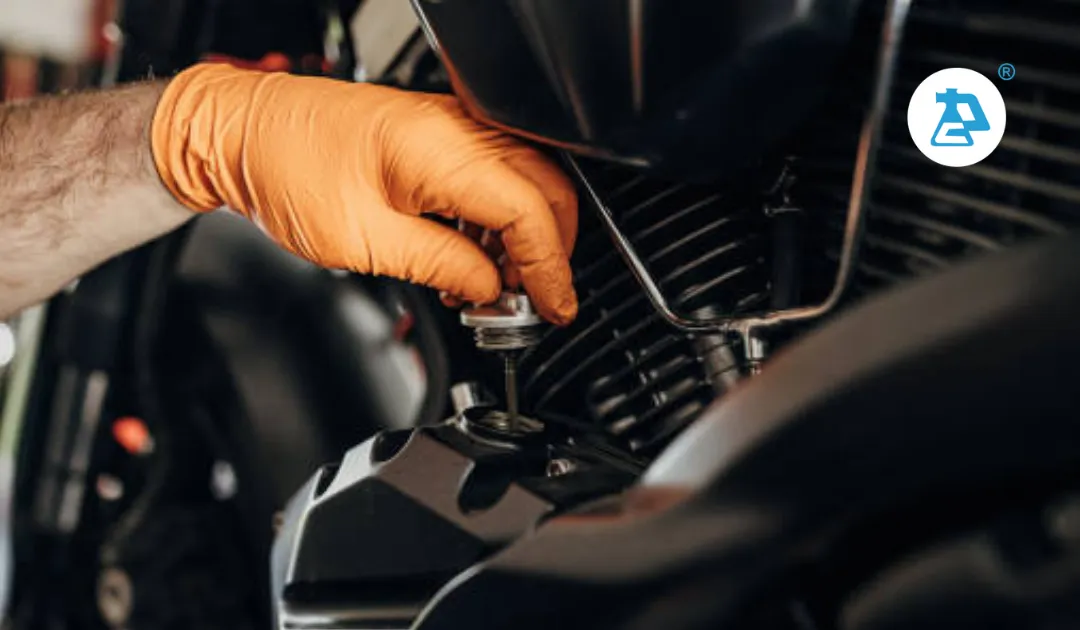In this comprehensive guide, we’ll explore the importance of maintaining proper oil levels, detailing when and why it’s crucial for optimal engine performance and rider safety.
Introduction:
Motorcycles, much like any other mechanical equipment, require regular maintenance to ensure optimal performance and longevity. One crucial aspect of motorcycle maintenance is monitoring and replenishing engine oil.
Understanding Motorcycle Engine Oil:
Engine oil plays a fundamental role in lubricating various components within the motorcycle engine, reducing friction, dissipating heat, and preventing wear and tear. Over time, due to engine operation and environmental factors, engine oil gradually degrades, losing its lubricating properties and becoming contaminated with dirt, debris, and combustion by-products.
When to Top Up Motorcycle Engine Oil:
Knowing when to top up your motorcycle’s engine oil is crucial for maintaining optimal engine health. Here are some indicators that it’s time to add more oil:
Low Oil Level:
Most motorcycles are equipped with a sight glass or dipstick that allows riders to check the oil level. If the level falls below the recommended range, it’s time to top up.
Oil Consumption:
Keep an eye on your motorcycle’s oil consumption rate. If you notice that your bike is burning oil at a faster rate than usual, it’s likely that you’ll need to top up more frequently.
Scheduled Maintenance:
Following the manufacturer’s recommended service intervals is essential. Regularly inspecting and topping up engine oil is typically part of routine maintenance tasks.
Extended Rides:
Long rides or heavy usage can accelerate oil consumption and necessitate more frequent top-ups.
Why Top Up Motorcycle Engine Oil?
Topping up motorcycle engine oil is not just about maintaining the correct oil level; it’s crucial for ensuring the health and longevity of your bike’s engine. Here’s why it’s essential:
Lubrication:
Adequate lubrication is vital for reducing friction between moving parts within the engine. Insufficient oil can lead to increased wear and tear, potentially causing costly damage.
Cooling:
Engine oil helps dissipate heat generated during combustion and frictional processes. Insufficient oil can lead to overheating, which can compromise engine performance and even cause catastrophic failure.
Protection Against Contaminants:
Engine oil acts as a barrier, trapping dirt, debris, and combustion by-products, preventing them from causing damage to engine components. Topping up oil helps maintain this protective barrier.
Preserving Engine Performance:
A well-lubricated engine operates more efficiently, delivering optimal performance and fuel economy. Regularly topping up engine oil ensures that your motorcycle performs at its best.
Step-by-step Guide to Check Engine Oil Level
Here are the simple steps to follow:
- Park Your Motorcycle on a Level Surface:
Ensure that your motorcycle is parked on a flat, level surface. This ensures accurate measurement of the oil level. - Allow the Engine to Cool:
It’s essential to check the oil level when the engine is cool to prevent any risk of burns. Allow your motorcycle to sit idle for a few minutes to let the engine cool down. - Locate the Oil Dipstick or Sight Glass:
Depending on your motorcycle model, the oil level can be checked using either a dipstick or a sight glass. The dipstick is usually a long metal rod with markings indicating the oil level. The sight glass is a transparent window mounted on the engine casing.
For Dipstick Method:
- Remove the dipstick from its housing. Wipe it clean with a rag to remove any oil residue.
- Insert the dipstick back into the oil filler neck but do not screw it in. Let it rest on top.
- After a moment, pull out the dipstick again and observe the oil level. The oil should be between the minimum and maximum marks on the dipstick. If it’s below the minimum mark, you’ll need to add more oil.
For Sight Glass Method:
- Locate the sight glass on the engine casing. It’s typically positioned near the bottom of the engine.
- Check the oil level by observing the oil line in the sight glass. The oil level should be within the recommended range indicated by upper and lower lines or dots on the sight glass. If the oil level is below the lower line, you’ll need to add more oil.
Add Oil if Necessary:
If the oil level is below the recommended range, carefully add the appropriate type and amount of oil. Refer to your motorcycle’s manual for the correct oil type and capacity.
Recheck the Oil Level:
After adding oil, wait a few moments for it to settle, then recheck the oil level using the dipstick or sight glass. Ensure that the oil level is within the recommended range.
Securely Replace the Dipstick or Close the Oil Filler Cap:
Once you’ve confirmed the oil level is adequate, securely reinsert the dipstick into its housing or close the oil filler cap to prevent any leaks.
By following these simple steps, you can quickly and accurately check the engine oil level in your motorcycle, ensuring proper lubrication and optimal engine performance.
Conclusion:
Topping up motorcycle engine oil is a simple yet crucial aspect of maintenance that shouldn’t be overlooked. By staying vigilant and ensuring that your bike’s engine always has the right amount of clean, high-quality oil, you can prolong its lifespan, enhance performance, and enjoy a smoother riding experience. Remember to follow manufacturer recommendations for oil type and change intervals to keep your motorcycle running smoothly for miles to come.




